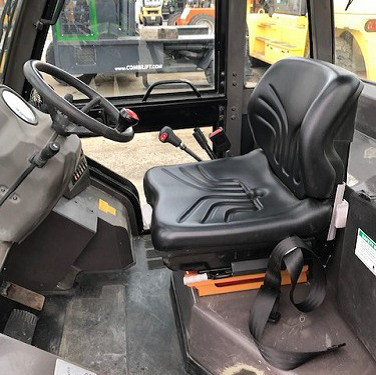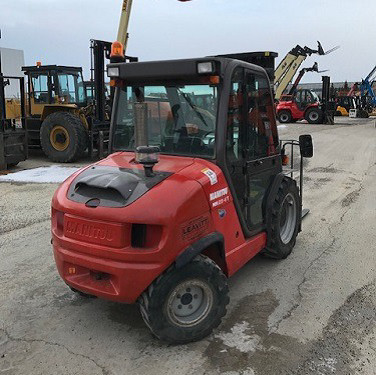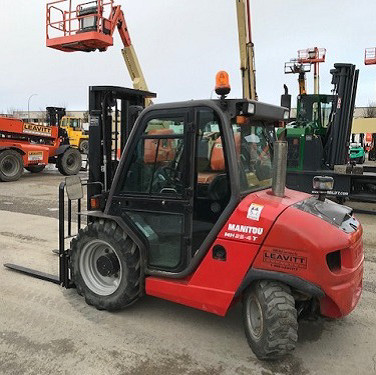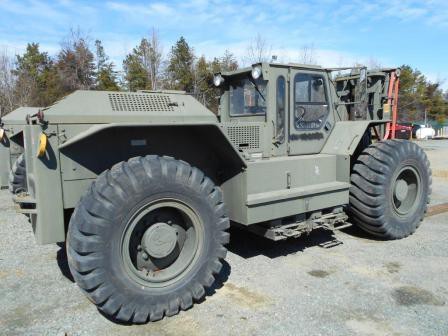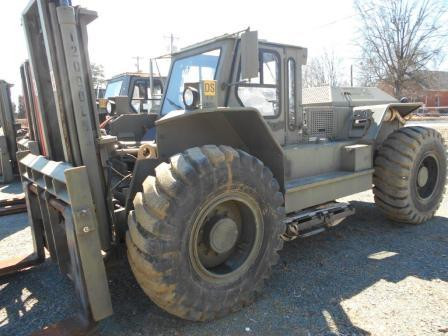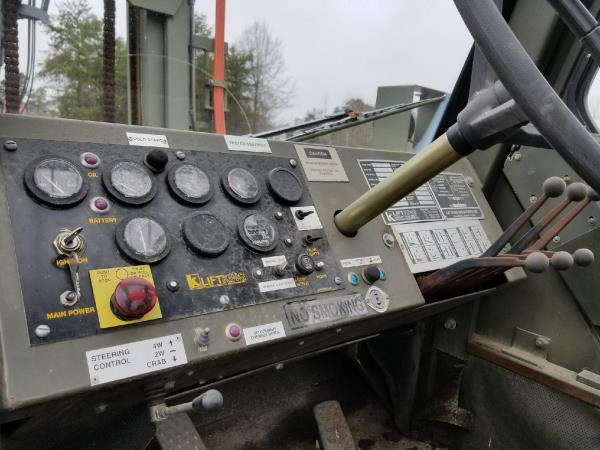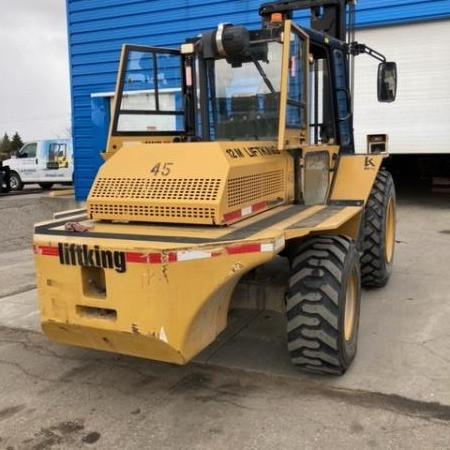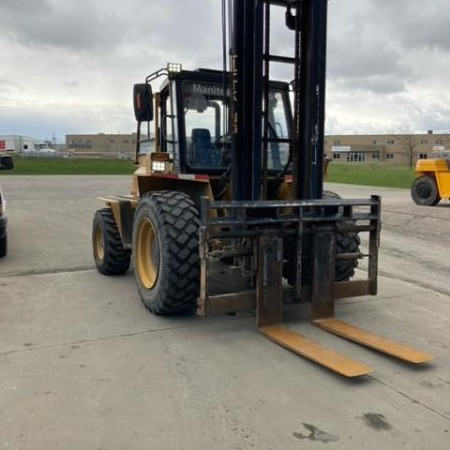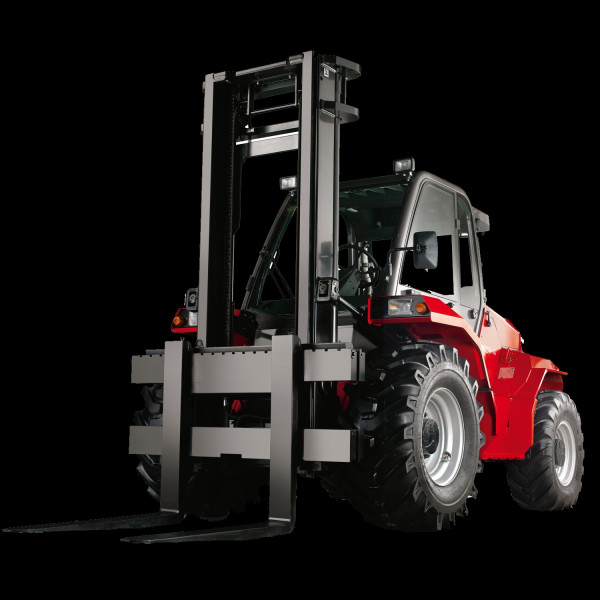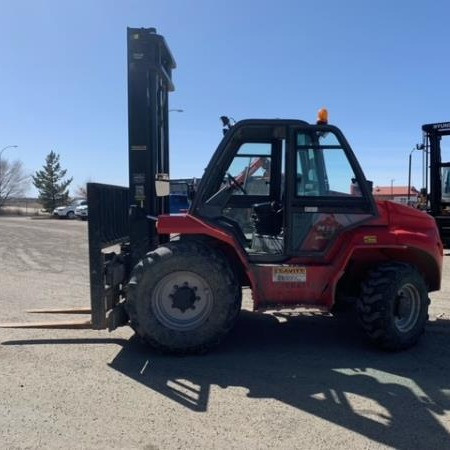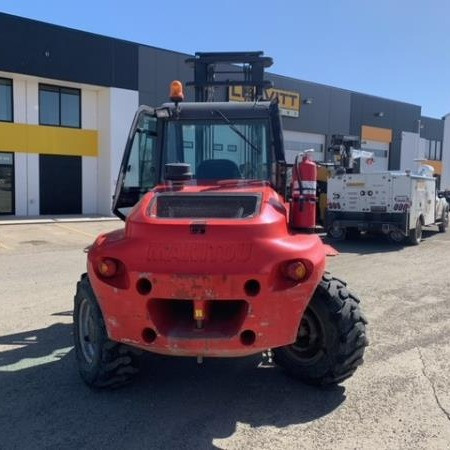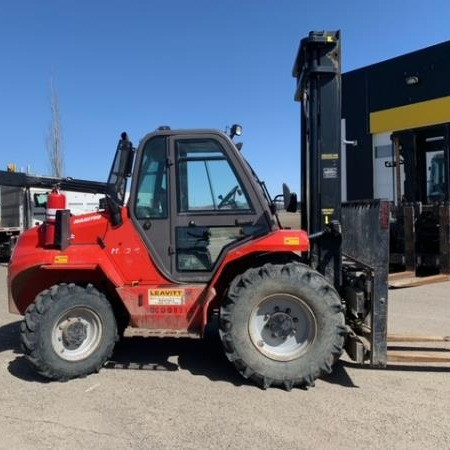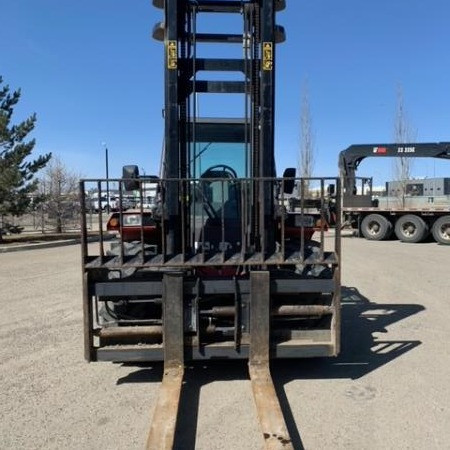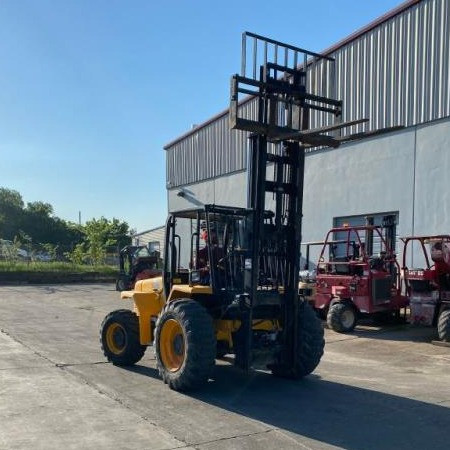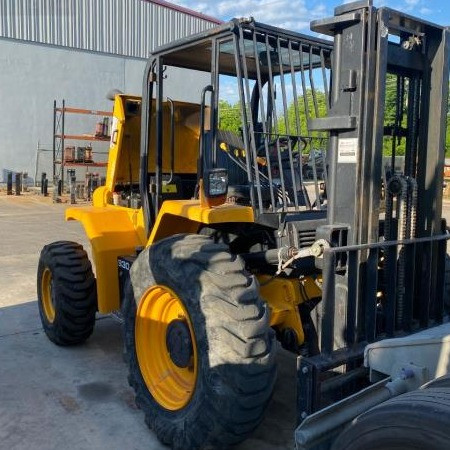Rough Terrain Forklift Pomona
Used Rough Terrain Forklift Pomona - Forklifts rely on two forks to unload, load and transport items. Forklifts fall into two main categories, industrial forklifts and rough terrain forklifts.
Industrial forklifts are mainly used in loading docks and warehouse applications with smooth and level surfaces. Ideal for uneven terrain and rocky locations, rough terrain forklifts travel well in difficult environments. Due to size, tires, and weight capacity, a rough terrain lift is primarily used outdoors, often at construction sites. The main difference between rough terrain and industrial forklifts is the cushion tires that are on industrial forklift models. Rough terrain models rely on pneumatic tires, a kind of tractor tire known for better floatation and traction abilities. Industrial forklifts can be powered by internal combustion engines but are more frequently powered by an electrical source, such as battery or fuel cell whereas rough terrain forklifts are almost always powered by an internal combustion engine.
Types of Class 7 Rough Terrain Forklift Trucks
There are three main types of Class 7 Rough Terrain Forklift Trucks:
1. Straight mast forklifts;
2. Telehandler forklifts; and
3. Rotating telehandler forklifts.
Every rough terrain forklift truck is designed to operate on disturbed ground and difficult locations commonly found in military and construction atmospheres. The rough terrain models travel and perform well in difficult locations. In the case of rough terrain forklift operations, extra consideration must be given while raising loads in these rough, variable conditions to prevent tip-over. For safety reasons, it is vital the forklift maintains stability before moving, lifting or lowering. Stability of ground and knowledge of proper lifting technique is essential for safe operation of rough terrain forklifts.
Straight Mast Forklifts
Designed to facilitate safe transport along difficult terrain such as demolition sites and construction locations, straight mast forklifts can complete the job safely and efficiently. Better accessibility and maneuverability are offered by these units thanks to their pneumatic cushion tires. Uneven ground and rough surfaces are no match for pneumatic tires. The majority of straight mast forklifts come in both two wheel and four wheel drive capabilities. Most straight mast forklifts are powered by diesel or propane fuel, allowing them to be used indoors for short periods but are more suited to outdoor applications. The lift capacities of straight mast forklifts are similar to most standard forklifts with a range of approximately 5,000 to 36,000 pounds.
Telehandler or Telescopic Handler Forklifts
Telescopic handler forklifts or telehandlers feature a telescoping boom; hence their name. Telescoping booms are handy for allowing the machine to load and place items at different lift heights and distances in front of the forklift. The reachability of the forklift provides the operator with greater flexibility when placing a load.
Featuring two wheels found at the front and two wheels at the rear, the standard telehandler is a long and low machine. A telescopic boom is mounted at the rear of the forklift on a pivot that is fixed several feet higher than the forklift frame. The left side of the machine houses the cab and the hydraulic fluid tank and the fuel tank are found opposite to the cab. Along the center of the machine, the engine and transmission can be found inside the frame. This common configuration allows for a balanced forklift which is necessary for the basic stability of the machine which lifting, transporting and lowering loads.
Telehandler units offer significantly higher lifting heights compared to standard units. Also called compact telehandlers or high-reach telehandlers, these forklift trucks can lift their full load capacities from 18 feet, for the compact telehandlers, to 56 feet, for the high-reach telehandlers, into the air. Their load capacities usually range between 5,500 and 12,000 pounds.
All-terrain forklifts rely on all-wheel steering to deliver better maneuverability and stability. The power-shift transmission and steering features allow the operator to move the forklift into a safe and successful working proximity.
More recently, Telehandler forklift models have included additional features that incorporate the latest in ergonomics. Spacious cabs and tilted steering are some of the items redesigned for the ultimate comfort and productive features. Increasingly, these types of ergonomic features are in demand at worksites as they have been shown to improve productivity by decreasing operator repetitive stress injuries and operator fatigue.
A single joystick is a common design for most telehandlers. The joystick controls all the forklift’s boom functions as well as the hydraulic system which allows for straightforward and efficient operation.
These machines can use non-marking tires to allow them to be suitable for maintenance in stadiums and on buildings or billboards and sign operations.
Rotating Telehandler or Roto Telescopic Handler Forklifts
The basic telehandler forklift has much in common with rotating telehandlers and roto telescopic handler forklifts. The rotating telehandler can lift excessive loads to extreme heights safely and efficiently. However, these forklifts have the added ability to rotate the forklift on a turntable. The rotating function allows the forklift to swivel a full 360 degrees around, enabling access a much larger work area without having to reposition the forklift.
With rotating telehandlers, one joystick handles the lift capacity and a second joystick is responsible for the rotation factor. As with the standard telehandler forklift, rotating telehandlers are available with added features including power assist steering, four-wheel drive and minimized slip differential on the rear axle to boost traction and for additional safety.
Any machine with rotation capabilities will have additional safety measures to consider. Because of this, rotating telehandler rough terrain forklifts come with stabilizers to increase the safety when rotating loads from one side of the forklift to the other. Certain rotating telehandlers operate without stabilizers; minimizing the time it takes to reposition the machine and move to other workplace locations.
The standard telehandler offers fixed cab components and rotator telehandlers are generally smaller in comparison. Therefore, rotator telehandler units can access smaller loads when compared to standard telehandler units. Rotating telehandlers offer load capacities ranging from 4000 to 10,000 lbs. and lift heights between fifteen to eighty feet.
Standard and rotator telehandlers can double as a crane when outfitted with specific winch accessories. These units can enable job sites that require a crane to get the job done without having to rent and transport a separate machine.
Advancements for Rough Terrain Forklifts
Many attachments are currently available for rough terrain forklifts, such as booms, winches, rotating fork carriages and articulating booms. More rough terrain forklift attachments will be unleashed onto the market in future years thanks to their ability to make the forklift more multi-purpose than ever before.
However, the bulk of advancements are expected to be in the form of safety features, built-in to manufactured rough terrain forklifts. The latest safety upgrades include automatic load restriction and other features. By automatically weighing a load, these systems calculate the loads’ safe reach distance while taking the boom angle and its’ extension into account. An alarm will go off once the safe distance is reached. This alerts the operator that immediate adjustments need to be made to the boom angle, reach distance or load weight.
Rough Terrain Forklift PDF
Stock Number: DP-MAN008 GL
Make: MANITOU
Model: MH25-4T
Year: 2016
| Stock Number |
DP-MAN008 GL |
| Make |
MANITOU |
| Model |
MH25-4T |
| Year |
2016 |
| Category |
Rough Terrain Forklift |
Stock Number: 267846 GL
Make: Liftking
Model: LK12000
Year: 2003
| Stock Number |
267846 GL |
| Make |
Liftking |
| Model |
LK12000 |
| Year |
2003 |
| Category |
Rough Terrain Forklift |
Stock Number: 209058 GL
Make: LIFTKING
Model: LK12M42
Year: 2015
| Stock Number |
209058 GL |
| Make |
LIFTKING |
| Model |
LK12M42 |
| Year |
2015 |
| Category |
Rough Terrain Forklift |
Stock Number: 208325 GL
Make: MANITOU
Model: M50.4
Year: 2015
| Stock Number |
208325 GL |
| Make |
MANITOU |
| Model |
M50.4 |
| Year |
2015 |
| Category |
Rough Terrain Forklift |
Stock Number: EQC008213 GL
Make: MANITOU
Model: M50
Year: 2017
| Stock Number |
EQC008213 GL |
| Make |
MANITOU |
| Model |
M50 |
| Year |
2017 |
| Category |
Rough Terrain Forklift |
Stock Number: LS15257 GL
Make: JCB
Model: 930
Year: 2013
| Stock Number |
LS15257 GL |
| Make |
JCB |
| Model |
930 |
| Year |
2013 |
| Category |
Rough Terrain Forklift |


